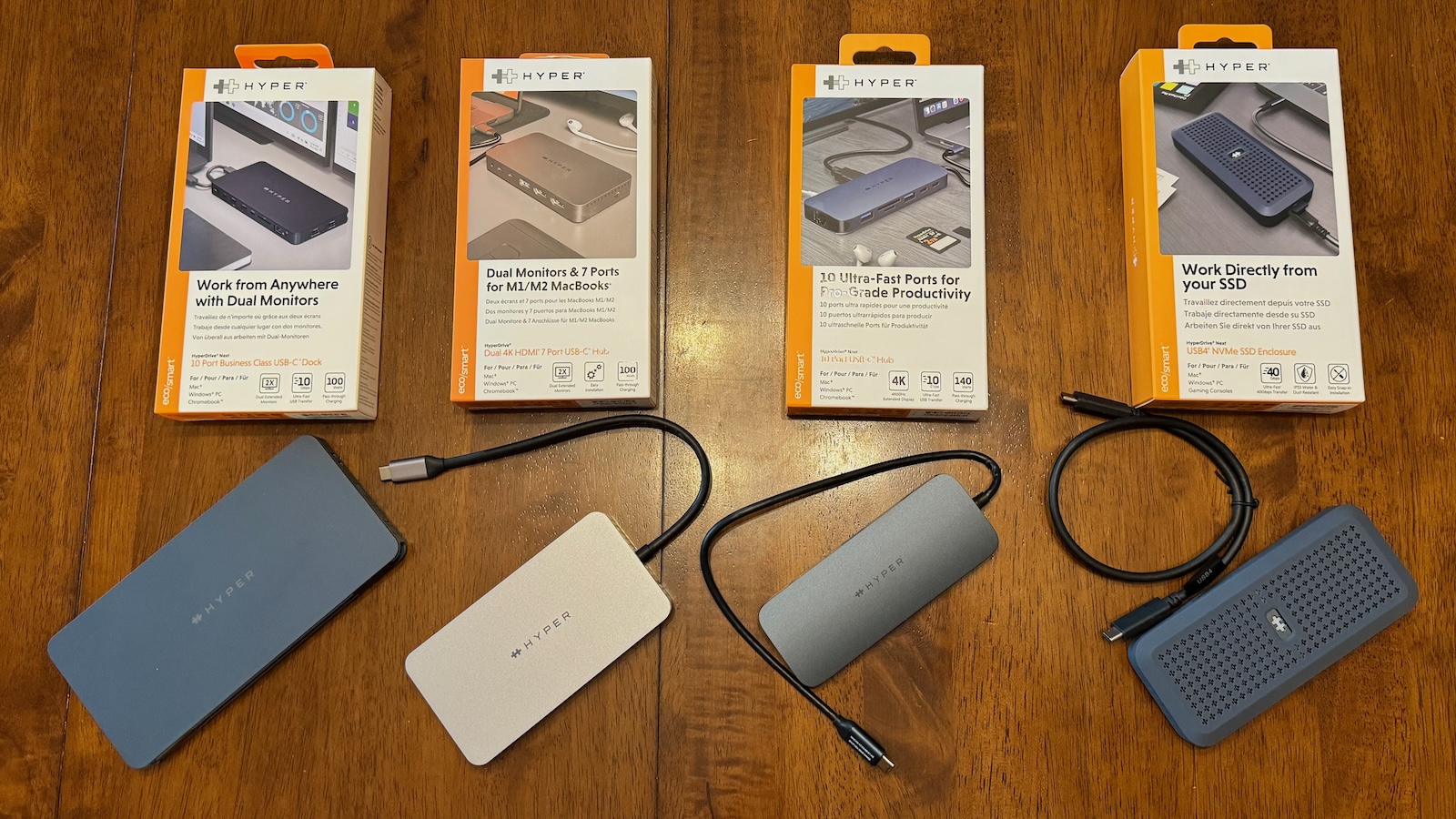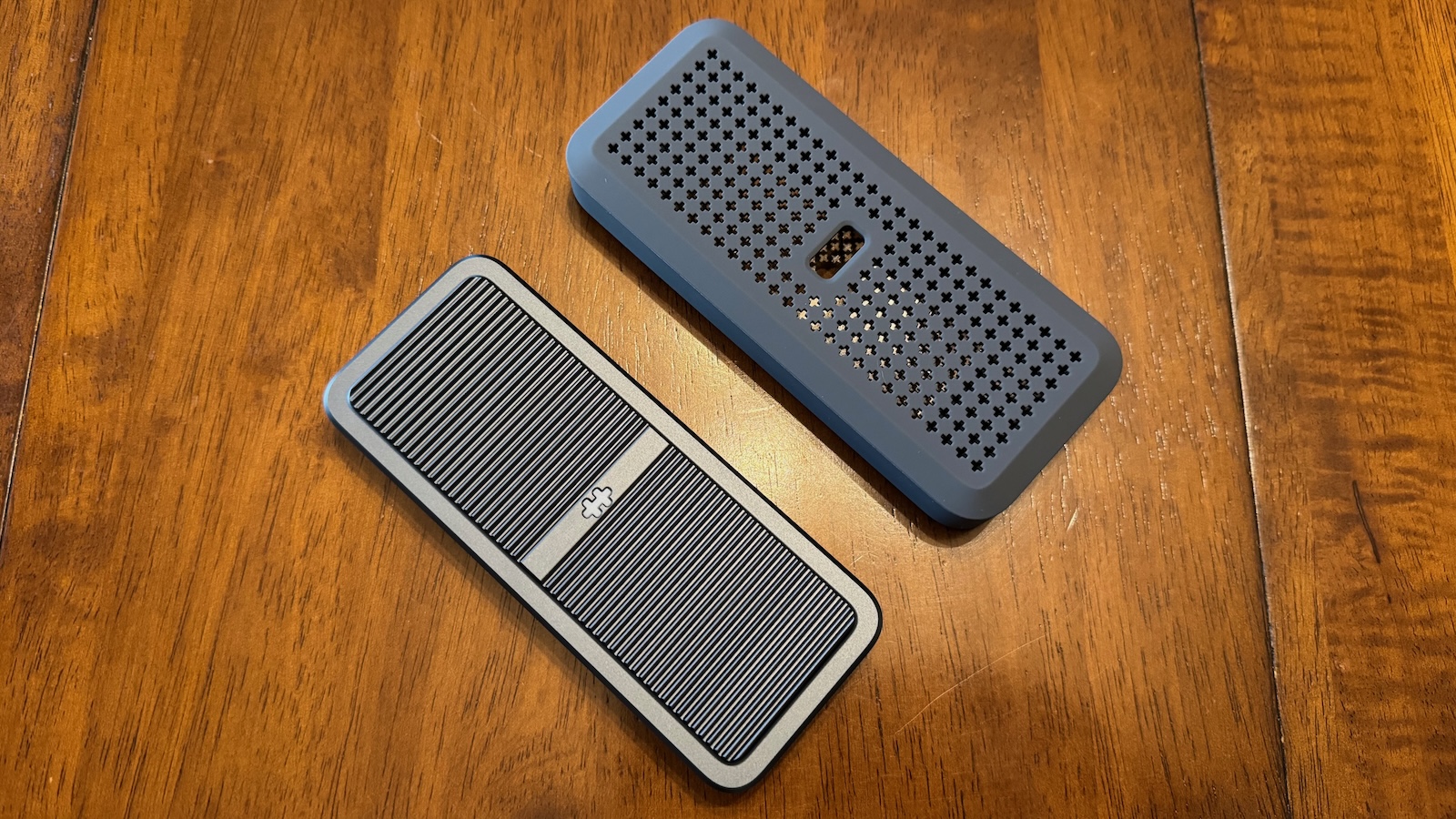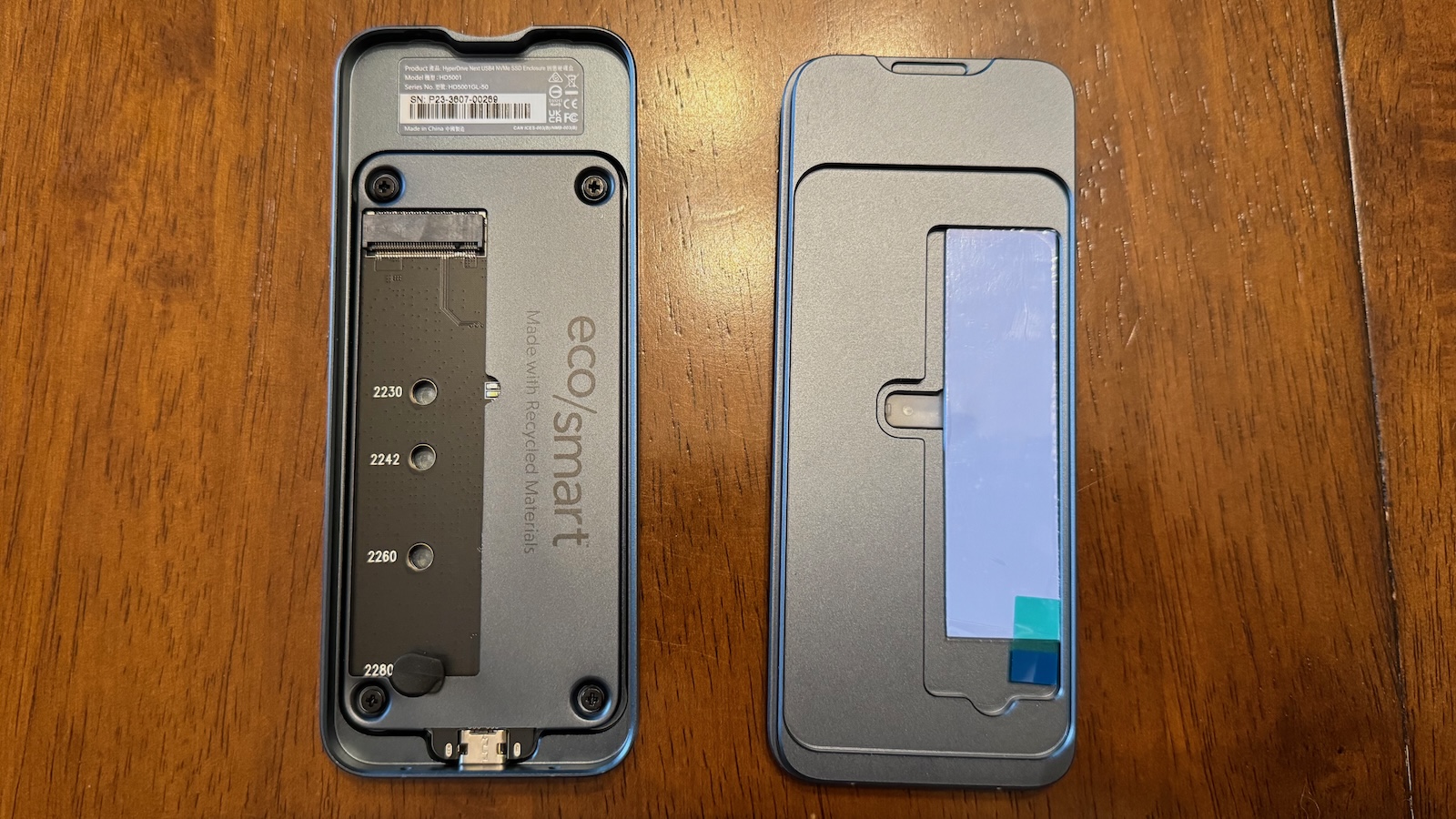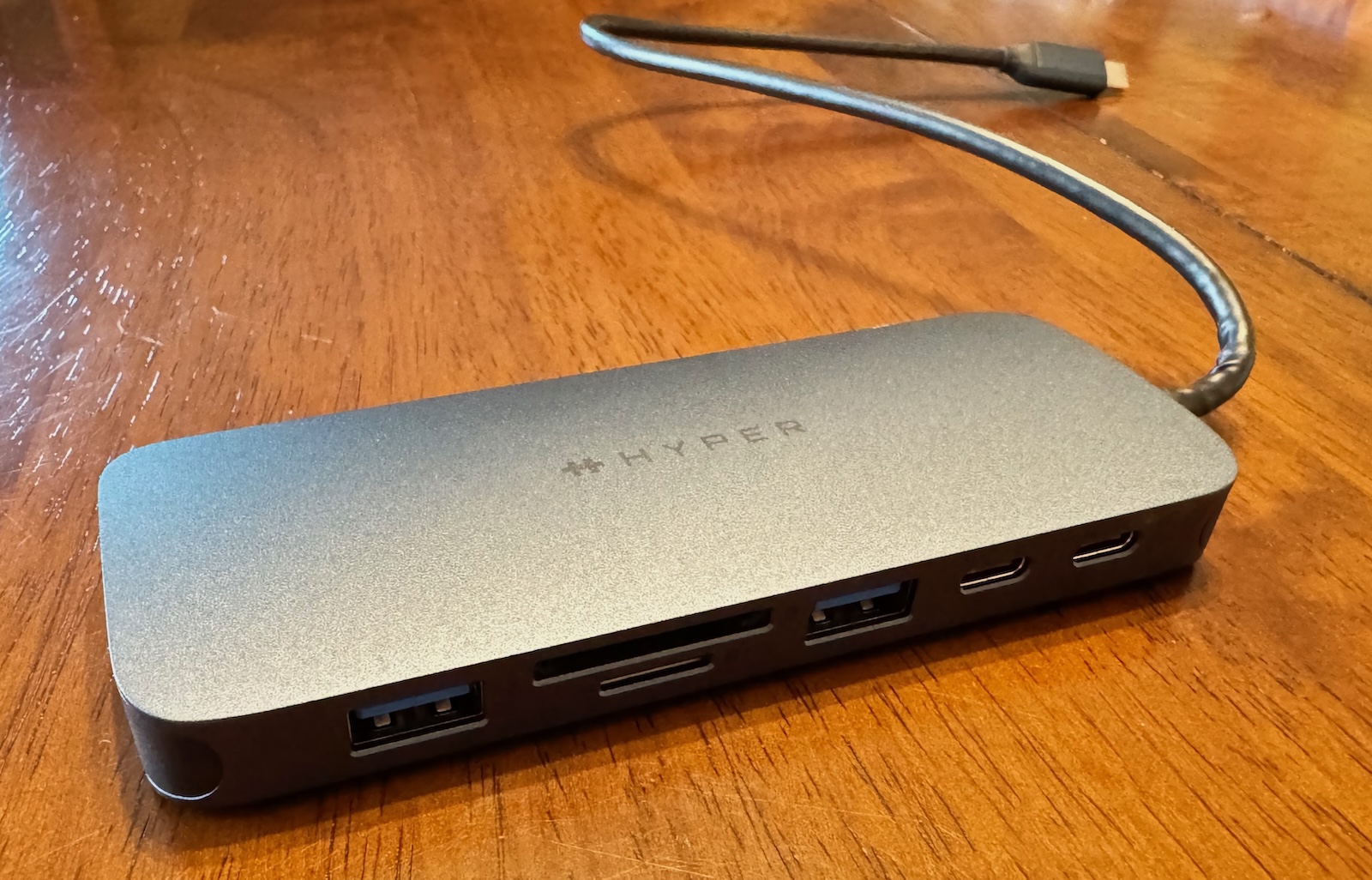
Several months ago, Hyper introduced a series of accessories under the "HyperDrive Next" family, bringing a variety of options for USB-C hubs and other products. I've recently spent some time testing out some of these accessories, and I've found them to offer an assortment of capabilities across price points to suit a variety of users.

USB4 NVMe SSD Enclosure
Priced at $119.99, Hyper's USB4 NVMe SSD Enclosure offers support for a speedy external drive inside a robust aluminum enclosure protected by a silicone bumper to cushion against impacts and provide IP55 dust and water resistance. The enclosure supports M.2 NVMe PCIe Gen 4/3 SSDs up to 16 TB with a snap-in installation process that requires no screws. SSDs in 2230/2240/2260/2280 sizes are supported.

For testing, I paired Hyper's enclosure with a 2TB WD_BLACK SSD that supports up to 7,300 MB/s transfer speeds, allowing me to push the enclosure to its limits without being capped by the SSD. The installation process was as simple as advertised, and all I had to do was pop open the enclosure by hand, slide the SSD into the drive slot, secure it with a rubber secure grip, peel off the protective film on a preinstalled thermal pad, and close everything back up. An extra thermal pad and secure grips are provided in the box in case you need them.

A 0.5-meter USB4 cable is included with the enclosure, and upon plugging the enclosure in to my MacBook Pro, I was able to quickly format it for APFS with Disk Utility to work with macOS. An illuminated Hyper logo on the enclosure shines through an opening in the silicone bumper, giving you some information about drive status. The logo shines a steady white when the enclosure is powered on and the drive is idle, and it blinks while data is being read from or written to the SSD. The logo will blink red if detects an SSD is not connected.
Hyper says the enclosure supports up to 3,800 MB/s transfer speeds, and in my testing with a 16-inch M1 Pro MacBook Pro I saw both read and write speeds registering around 3,100 MB/s with the WD SSD. That's plenty fast for most users, allowing for fast file transfers and even the ability to work with large projects directly from the external drive. I was able to copy a ~28 GB folder with roughly 17,500 items in it to the drive in around 15 seconds.

The enclosure gets slightly warm even when not in active use, with the finned aluminum design of the enclosure and small Hyper logo-shaped holes in the silicone bumper helping move heat away from the drive. The heat was not a concern in any of my testing, as it remained comfortable to touch.
Overall, I was pleased with the performance of the enclosure, and it's a convenient solution for backing up data or just adding extra storage. At $119.99 before adding in the cost of the SSD itself, it's pricier than some other solutions, but when you consider the higher-end specs it offers, it's within the same price range as many other options from trusted brands.
Hyper is currently sold out of the SSD enclosure on its own site, but does have it available through Amazon.
10 Port USB-C Hub
At the low end of Hyper's USB hub range is the 10 Port USB-C Hub priced at $99.99. It includes support for a single external display at 4K60Hz over HDMI while offering a pair of 10 Gbps USB-C ports, two USB-A ports (one at 10 Gbps and one at 5 Gbps), SD and microSD 4.0 card slots supporting up to a theoretical maximum of 312 MB/s, Gigabit Ethernet, and a 3.5 mm combo audio jack.

There's also a USB-C port with PD support at up to 140 watts, allowing for passthrough power to your computer if you hook up an external power adapter. Otherwise, the hub will run in bus-powered mode off of your computer. The hub connects to the attached computer over an integrated USB-C cable, which ensures you always have the proper cable with you but introduces a potential failure point for the whole accessory. The cable does feel fairly thick and sturdy with some strain relief reinforcement around where it enters the hub, so hopefully it will remain durable over the long term.
This is a compact, lightweight (97 grams) hub in a very dark gray or almost midnight aluminum finish, and in my testing it's proven to be a solid option for on-the-go use cases. It slips easily into a computer bag or sleeve and offers a really nice selection of ports to help you make use of a wide variety of accessories you might run across.

With support for a single external display, this may not be for true power users, but the vast majority of people are likely to only need to connect to a single display, especially in travel environments where this hub excels. A more powerful dock with additional display support and even more ports would likely suit these users better at more fixed home and office locations.
Hyper is currently sold out of the 10 Port USB-C Hub on its own site, but it is available through Amazon and Best Buy.
Dual 4K HDMI 7 Port USB-C Hub
Hyper's mid-range Dual 4K HDMI 7 Port USB-C Hub priced at $149.99 offers fewer ports than the lower-end model but with enhanced display support. It includes two HDMI ports (one HDMI 2.0 at 4K60Hz and one HDMI 1.4 at 4K30Hz), a pair of 10 Gbps USB-C 3.2 Gen 2 ports, a single 10 Gbps USB-A port, a 3.5mm combo audio jack, and a USB-C port allowing you to optio... Click here to read rest of article
Article Link: Review: Hyper's USB Hubs and SSD Enclosure Offer an Array of Connectivity Options
As an Amazon Associate, MacRumors earns a commission from qualifying purchases made through links in this post.



